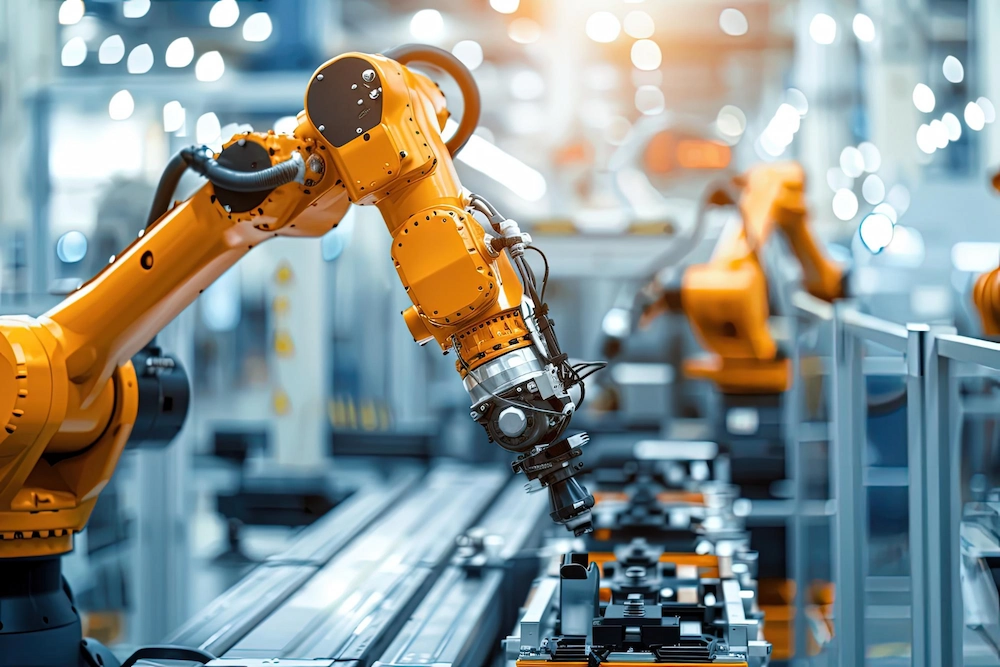Unleashing the Power of Automated Assembly Systems

Attention Grabbing Hook: Imagine a world where your manufacturing processes run seamlessly, with minimal human intervention and maximum precision. Welcome to the world of automated assembly systems!
Introduction
In today's fast-paced manufacturing industry, efficiency and precision are paramount. Automated assembly systems have emerged as a game-changer, revolutionizing the way products are assembled. These systems not only enhance productivity but also ensure consistent quality, making them indispensable in modern manufacturing.
What Are Automated Assembly Systems?
Automated assembly systems are sophisticated machinery designed to assemble components with minimal human intervention. These systems utilize advanced technology, including robotics, sensors, and control systems, to perform repetitive tasks with high precision and speed. By integrating these systems into the production line, manufacturers can achieve significant improvements in efficiency and output.
Components of Automated Assembly Systems
Automated assembly systems comprise several key components that work together seamlessly:
Robotic Arms: These are the backbone of automated assembly systems, performing tasks such as picking, placing, and fastening components with high precision.
Conveyors: Conveyors transport parts between different stages of the assembly process, ensuring a smooth and continuous flow.
Sensors: Sensors detect the presence and position of components, enabling accurate and timely actions by the robotic arms.
Control Systems: Advanced control systems coordinate the actions of all components, ensuring optimal performance and synchronization.
Benefits of Automated Assembly Systems
The adoption of automated assembly systems offers numerous benefits:
Increased Efficiency: Automated systems operate at high speeds and can work continuously without fatigue, significantly boosting productivity.
Consistent Quality: Precision and accuracy are hallmarks of automated systems, leading to uniform quality in assembled products.
Cost Savings: While the initial investment may be high, the long-term savings in labor costs, reduced waste, and increased output make it a worthwhile investment.
Flexibility: Modern automated systems can be easily reprogrammed to handle different products and assembly tasks, providing flexibility in production.
Safety: By minimizing human intervention, automated systems reduce the risk of workplace accidents, ensuring a safer working environment.
Applications of Automated Assembly Systems
Automated assembly systems are widely used across various industries, including:
Automotive: For assembling complex components such as engines and transmissions.
Electronics: In the production of circuit boards and electronic devices.
Consumer Goods: For assembling everyday items like household appliances and toys.
Medical Devices: Ensuring precision and reliability in the assembly of medical equipment.
Future Trends in Automated Assembly Systems
The future of automated assembly systems looks promising, with several emerging trends poised to further enhance their capabilities:
Artificial Intelligence: Integrating AI into automated systems can enable predictive maintenance, optimizing performance and reducing downtime.
IoT Connectivity: Connecting assembly systems to the Internet of Things (IoT) allows real-time monitoring and data analysis, improving decision-making and efficiency.
Collaborative Robots: Also known as cobots, these robots can work alongside humans, combining the strengths of both to achieve better results.Automated assembly systems are transforming the manufacturing landscape, offering unparalleled efficiency, precision, and flexibility. As technology continues to advance, these systems will become even more integral to production processes, driving the industry towards greater innovation and productivity.








